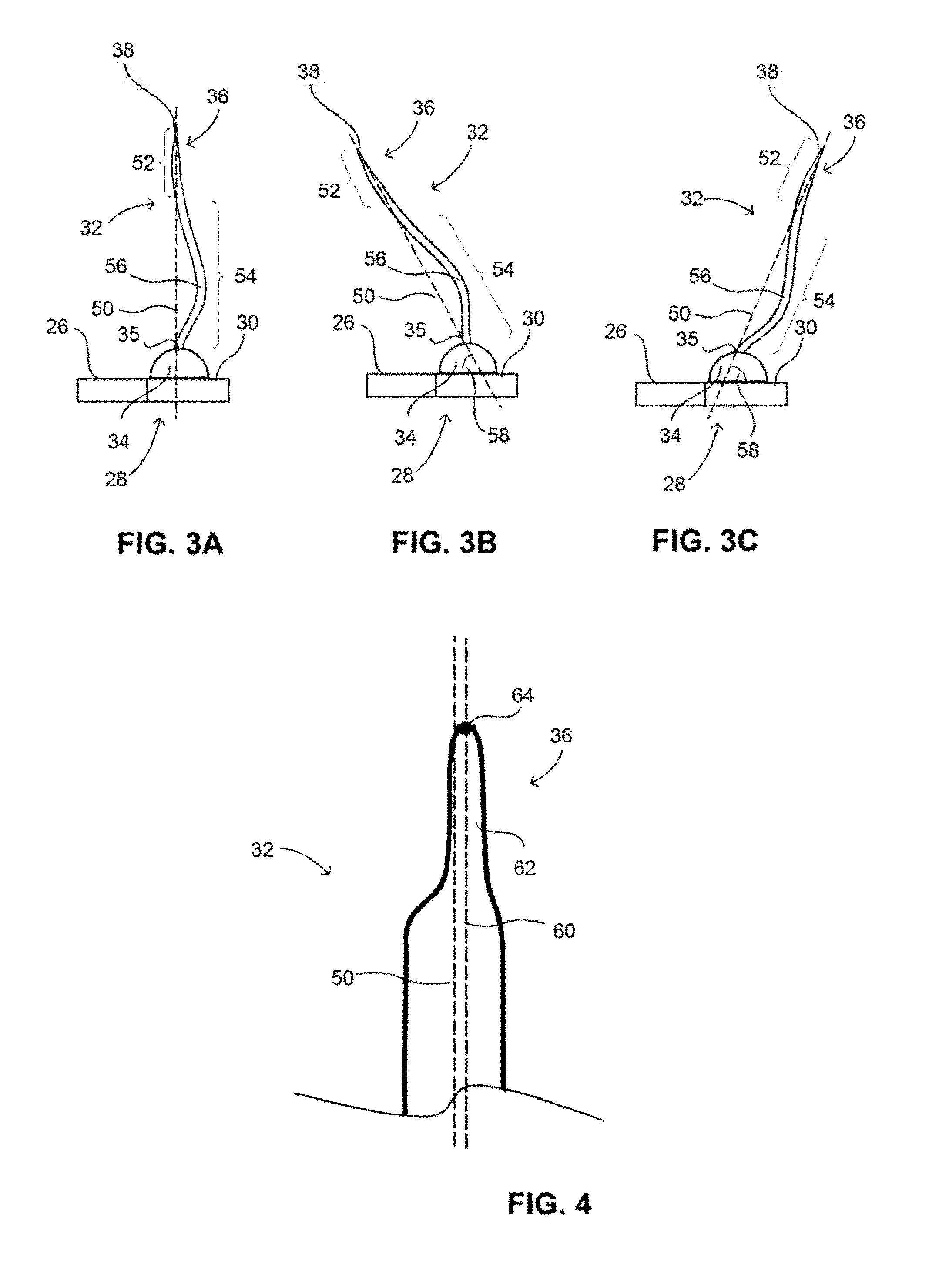Microelectronic element with bond elements to encapsulation surface
a microelectronic element and bonding technology, applied in the field of microelectronic elements, can solve the problems of affecting the reliability and performance of the device, affecting the reliability of the device, and stressing the solder mass (or other structure)
- Summary
- Abstract
- Description
- Claims
- Application Information
AI Technical Summary
Benefits of technology
Problems solved by technology
Method used
Image
Examples
Embodiment Construction
[0031]Turning now to the figures, where similar numeric references are used to indicate similar features, there is shown in FIG. 1 a microelectronic structure 10 that can be in the form of a microelectronic element according to an embodiment of the present invention. The embodiment of FIG. 1 is a microelectronic element in the form of a semiconductor die 12 (also referred to as a semiconductor chip) having a plurality of wire bonds 32 extending from contacts 28 thereof to extending portions 40 thereof that extend above a compliant material layer 42 that covers and separates remaining portions of the wire bonds 32 from each other, including portions thereof adjacent semiconductor die 12. The structure 10 can then used in computer or other electronic applications either alone or in an assembly with further components.
[0032]The microelectronic element 10 of FIG. 1 includes semiconductor die 12 having a first surface 14 and a second surface 16. For purposes of this discussion, the first...
PUM
 Login to View More
Login to View More Abstract
Description
Claims
Application Information
 Login to View More
Login to View More - R&D
- Intellectual Property
- Life Sciences
- Materials
- Tech Scout
- Unparalleled Data Quality
- Higher Quality Content
- 60% Fewer Hallucinations
Browse by: Latest US Patents, China's latest patents, Technical Efficacy Thesaurus, Application Domain, Technology Topic, Popular Technical Reports.
© 2025 PatSnap. All rights reserved.Legal|Privacy policy|Modern Slavery Act Transparency Statement|Sitemap|About US| Contact US: help@patsnap.com



